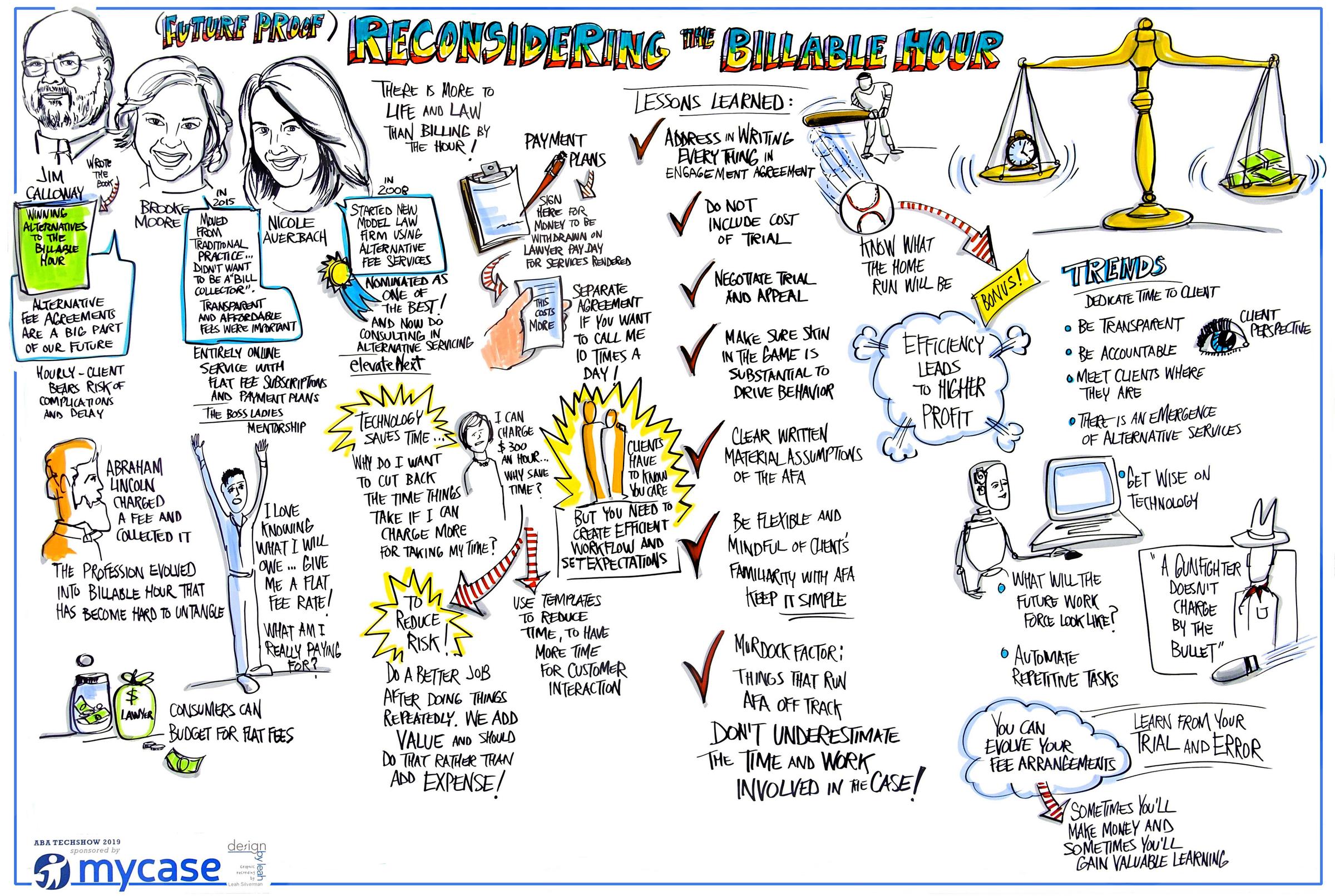Billable hours: they’re the bane of existence for many lawyers. But does it necessarily have to be the case? Some lawyers will tell you that billable hours are required since that’s the way things have always been done. And they’re right: tracking and billing time has long been part of the daily lives of lawyers.
But in 2019 does it have to be that way? After all, billing time often adds stress to lawyer’s already busy practices.
The good news is that there are other options. Your firm could easily join the ranks of the many other firms already using alternative fees – the trick is knowing how to implement them into your firm in a way that works for your firms practice areas and needs.
If you’re interested in learning more, then you’re in luck! This very topic was covered last month at the ABA Techshow in Chicago. During this presentation, “Reconsidering the Billable Hour,” Jim Calloway, Brooke Moore, and Nicole Averbach offered lots of guidance for firms seeking to transition to alternative billing methods.
Below you’ll find the visual notes from that session along with some of our favorite tips (click to view larger image):

Clients prefer fee transparency
According to the presenters, one of the top reasons to use alternative fee billing structures is because clients prefer them. When the total fee and expectations are established up front, clients are able to budget and plan for fee payment. Because unexpected and costly legal fees can be stressful, flat fees and alternative billing structures such as fee subscription plans reduce client stress and result in happier, more appreciative clients.
Another way to provide client-focused legal services and ensure that bills are paid is to accept different methods of payment. It used to be that law firms accepted only cash or checks. But these days, credit cards and online payments are the norm, and legal consumers expect law firms to offer those payment options. That’s why you want to make it easy for clients to pay your firm’s bills by providing flexibility when it comes to making payments.
The easiest way to provide your clients with payment flexibility is to use legal billing software with built-in online payment tools. That way, when you send clients a bill, they can simply click on a link and instantly pay online via e-check (ACH) or credit card.
Use technology to predict costs and determine your fee
According to the presenters, another way to improve your firm’s billing processes is to use technology. If you use the right tools, you’ll be better able to streamline your firm’s billing processes, saving your firm time and money.
One way to do use technology in a client-friendly way is to use legal software that makes it easy for you to allow your clients to set up payment plans for their legal bills. This way, you provide your clients with increased flexibility, making it easier than ever to pay large legal bills.
Using the built-in payment plan features in your law practice management or legal billing software, you can easily set up payment plans for your clients. You can create the payment plan, establish the amounts due and due dates, and share that information with your client, who can then instantly pay via ACH or credit card using built-in online payment tools.
Similarly, another way to use technology to improve your firm’s billing processes is by using software that allows you to set up automated invoice reminders. The initial invoice only needs to be sent once; after that, the software follows up with your client. No need to waste time resending the invoice manually.
Alternative fee agreement advice
The presenters offered the following advice for lawyers interested in experimenting with alternative fee structures:
Be sure to address everything in writing in the Engagement Agreement
Exclude the cost of trial and appeals from any flat fee agreement
Set client expectations up front and memorialize those expectations in the Engagement Agreement
Use simple, understandable, and concise language in the Engagement Agreement
Make sure that you don’t underestimate the time and work that will be involved.
Those are just a few tips to get you started. If you’d like to learn even more about transitioning your firm to an alternative fee structure, make sure to watch the video recording of a recent webinar focused on this very topic.